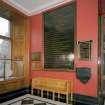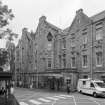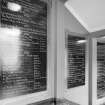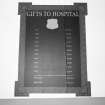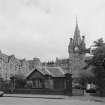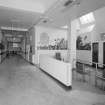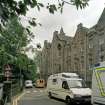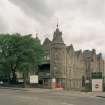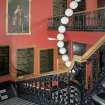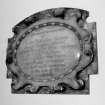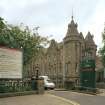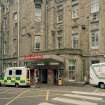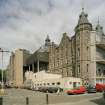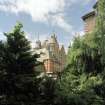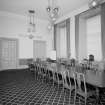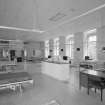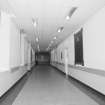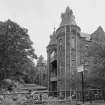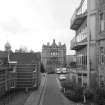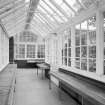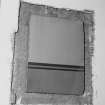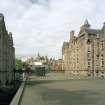Pricing Change
New pricing for orders of material from this site will come into place shortly. Charges for supply of digital images, digitisation on demand, prints and licensing will be altered.
Edinburgh, Lauriston Place, Edinburgh Royal Infirmary, Surgical Hospital (2)
Hospital (19th Century)
Site Name Edinburgh, Lauriston Place, Edinburgh Royal Infirmary, Surgical Hospital (2)
Classification Hospital (19th Century)
Alternative Name(s) Main Block And Linked Ward Pavilions
Canmore ID 123685
Site Number NT27SE 480.01
NGR NT 25600 73035
Datum OSGB36 - NGR
Permalink http://canmore.org.uk/site/123685
- Council Edinburgh, City Of
- Parish Edinburgh (Edinburgh, City Of)
- Former Region Lothian
- Former District City Of Edinburgh
- Former County Midlothian
See also:
NT27SE 480.00 Edinburgh, Lauriston Place, Royal Infirmary, General
480.02 Edinburgh, Lauriston Place, Royal Infirmary, Medical Hospital and
Jubilee Pavilion
480.03 Edinburgh, Lauriston Place, Royal Infirmary, Ear and Throat Pavilion
480.04 Edinburgh, Lauriston Place, Royal Infirmary, Opthalmological Pavilion
480.05 Edinburgh, Lauriston Place, Royal Infirmary, Former Nurses Home
480.06 Edinburgh, Lauriston Place, Royal Infirmary, Lodge
Standing Building Recording (28 March 2017 - 29 March 2017)
NT 25601 73041 AOC Archaeology Group was commissioned by Faithful & Gould on behalf of the University of Edinburgh to undertake an historic building survey of the former Surgical Hospital within the Old Royal Infirmary of Edinburgh site at Lauriston Place in Edinburgh. The works were undertaken in advance of and during the development as part of the listed building consent on the part-demolition and renovation of the former hospital building. It forms one of the last remaining sites to be developed as part of the Quartermile development.
The Surgical Hospital comprises the north side of the major new construction of the Royal Infirmary of Edinburgh in the 1870s to a design by David Bryce. A pavilion-style hospital in a Scottish Baronial style, it covers six floors (from the basement to the clock tower) with six pavilion wings centred around an east/west main corridor and administration block.
The design of the hospital was part of a new wave of monumental pavilion-style hospitals of the late 19th century in Britain, pioneered by Florence Nightingale and John Roberton. The baronial style of architecture for the time was also very typical of the period and the architect, Bryce. Centred around a thin east/west corridor, six pavilions – four to the north and two to the south - formed the main wards running over three floors with two smaller additional angled wings between the north pavilions. Later additions were added throughout the late 19th century and early 20th century, which also saw a huge expansion of the Infirmary site to the south and west. Additional large pavilions were added forming additional ward space and speciality services such as the Diamond Jubilee Pavilion and the Ear Nose and Throat hospital. Additions to the Surgical Hospital continued into the late 20th century with smaller departments nestled
between the existing wards and rooms of the complex, until the site as a whole was abandoned in 2002 and the Infirmary moved to its new site in Little France. Over the last 10 years, only a selection of the former Infirmary buildings were retained, the rest demolished, including the former 18th century William Adam administration wing between the Surgical and Medical Hospitals, which has left scars on the south elevation of the Surgical Hospital. As part of the development, all the modern additions will be stripped away and the original building renovated with some additional new build.
Information from Diana Sproat - AOC Archaeology Group.

















































































